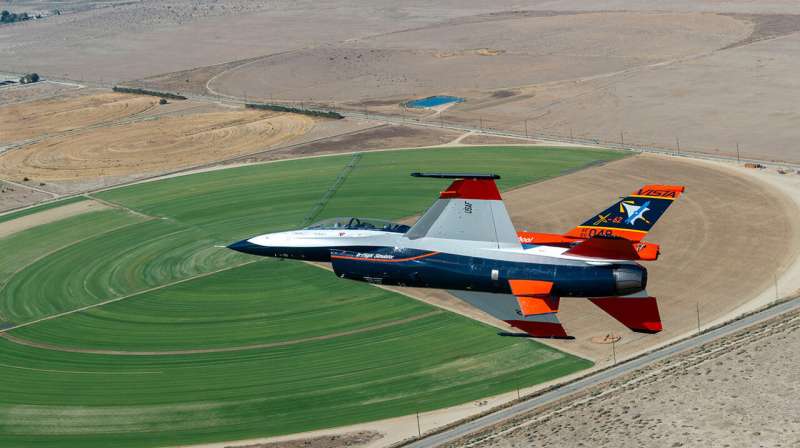
JUNE 19, 2024 by Ajai Raj, Johns Hopkins University
Collected at: https://techxplore.com/news/2024-06-ai-copilots-engage-future-air.html
The future of military conflict is inseparable from the development of artificial intelligence (AI). The battlefield of the future will be redefined by the fielding of intelligent autonomous systems operating at machine speed and with machine precision. As the National Security Commission on Artificial Intelligence stated bluntly in its 2021 final report: “Defending against AI-capable adversaries operating at machine speeds without employing AI is an invitation to disaster.”
“We need to keep human warfighters in control of the future battle, and that means investing in efforts to catalyze human decision-making with the advanced computing power of AI,” said Tom Urban, who supervises the Intelligent Combat Platforms Group at the Johns Hopkins Applied Physics Laboratory (APL) in Laurel, Maryland. “APL is involved in a number of efforts to do that by providing humans with intelligent virtual assistants.”
Building on more than a decade of pushing the boundaries of what AI can do in air combat, APL engineers and air combat specialists have made significant progress in creating a copilot that will grant the power, speed and precision of machine computation to human fighter pilots.
A software wingman
Most work in this domain, like the XQ-58A Valkyrie, the Air Force’s experimental pilotless aircraft, is focused on creating advanced autonomous fighter aircraft.
Researchers at APL, however, have their sights set on augmenting human decision-making with the computational power of AI. Rather than seeking to replace pilots, APL researchers aim to help them succeed by enhancing and complementing their abilities, intuition and experience with machine speed and precision.
To that end, the team has created—over three years of painstaking development—an AI teammate dubbed VIPR. Short for Virtual Intelligent Peer-Reasoning agent, VIPR serves a pilot in three critical capacities: as a situationally-aware peer, a performant wingman and a cognitive support assistant.
John Winder, a computer scientist in APL’s Force Projection Sector who co-leads the project with Urban, likens VIPR to R2-D2, the pilot-assisting droid from “Star Wars.”
“It can hang back and provide support by maintaining situational awareness, tracking blind spots and alerting the pilot when needed, or it can step up and play the role of the pilot, flying the plane and taking actions to save the life of its human pilot,” he said.
Tracking cognitive blind spots
Another way to think about VIPR is as an extremely advanced GPS and navigation assistant, there to help the driver overcome blind spots. But where a driver’s blind spots are visual, the fighter pilot’s blind spots are primarily cognitive.
“Fighter pilots are, by nature, very confident people,” said Winder. “That’s a professional necessity and an asset, but it can also lead to a kind of tunnel vision that might prevent them from taking on critical new information in the heat of combat.”
One of VIPR’s most important functions, therefore, is to actively track the cognitive state of the pilot. It has to understand the pilot’s intentions, know what the pilot knows and reason about what the pilot understands, so that it recognizes when the AI and the pilot are no longer on the same page.
“Besides looking ‘outward’ to track and predict adversary threats, VIPR also has to look ‘inward’ to understand the human pilot’s intentions, objectives and modes of behavior, all on a second-by-second basis,” Winder said. “And when the pilot has missed something critical during combat, VIPR has to inform them of that in a timely, actionable manner to help them survive the engagement.”
The VIPR prototype is capable of doing all of this in an interactive real-time simulation, responding to the pilot’s voice commands, switching roles between full pilot and copilot fluidly and seamlessly—and if that weren’t enough, it can also pilot multiple autonomous squad mates, or collaborative combat aircraft. In this mode, the human pilot can act like the quarterback on a football team, directing the objectives of a VIPR-controlled team.
After three years of development, the APL team is preparing to more formally evaluate its AI prototype with human pilots. But anecdotally, at least, the initial response has been promising.
“We have some former pilots on our team, and they’ve all walked away from engaging in the simulation with smiles on their faces,” Winder said. “And as a non-pilot myself, when I engage in the simulation scenario unassisted, I survive for maybe eight seconds. With VIPR, I’m able to survive and win.
“Obviously, we have much more rigorous testing to do before this can be fielded, but we’re optimistic based on what we’ve seen so far.”

Leave a Reply